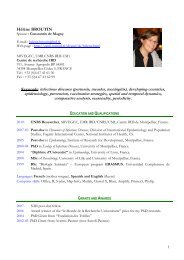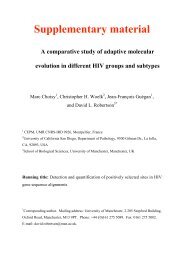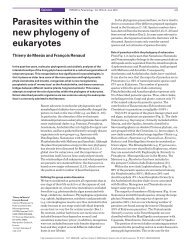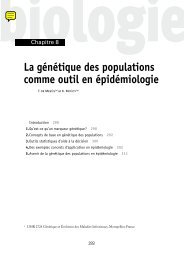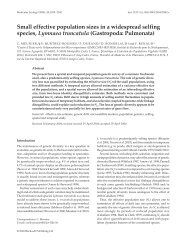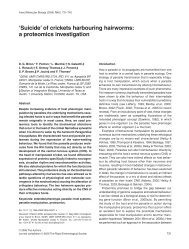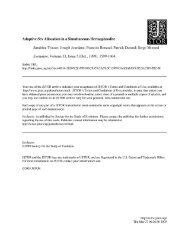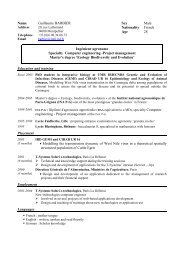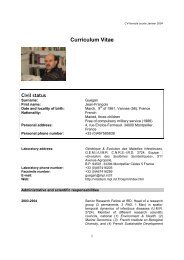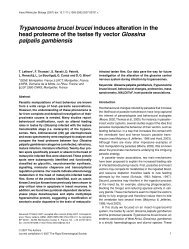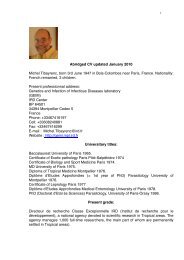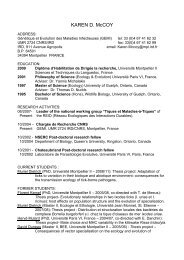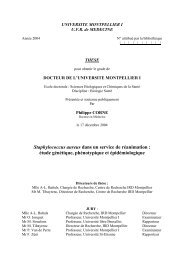écologie des virus influenza aviaires en Camargue - IRD
écologie des virus influenza aviaires en Camargue - IRD
écologie des virus influenza aviaires en Camargue - IRD
Create successful ePaper yourself
Turn your PDF publications into a flip-book with our unique Google optimized e-Paper software.
Émerg<strong>en</strong>ce du <strong>virus</strong> H5N1 hautem<strong>en</strong>t pathogènerabbit (Oryctolagus cuniculus) populations [34, 35], there is no indication that this happ<strong>en</strong>swh<strong>en</strong> HP H5N1 gains access to wild bird populations.Host diversityThe influ<strong>en</strong>ce of host population structure in selection for virul<strong>en</strong>ce is oft<strong>en</strong> critical [e.g. 36].Levels of virul<strong>en</strong>ce are determined by and proportional to the frequ<strong>en</strong>cy with which interhost transmission opportunities arise. Low virul<strong>en</strong>ce is typically selected for wh<strong>en</strong> hosthostcontacts are infrequ<strong>en</strong>t, while high virul<strong>en</strong>ce can be selected only wh<strong>en</strong> the host contact rateis high [37]. In wild bird populations, contact rates betwe<strong>en</strong> individuals differ markedlybetwe<strong>en</strong> seasons (e.g. reproductive period, migration, wintering), species (e.g. colonialbirds), age, etc. For instance, high bird d<strong>en</strong>sities are reached by some species in moulting andwintering areas. These yearly aggregations do not, however, lead to the selection andemerg<strong>en</strong>ce of HP AIV [e.g. 3, 17]. Compared to wild conditions, host d<strong>en</strong>sities in farmingconditions are not only high (ev<strong>en</strong> extreme under int<strong>en</strong>sive poultry production), butconsist<strong>en</strong>tly so, which may be a major determinant for the selection of high virul<strong>en</strong>ce.Networks of poultry production are also likely to favor the persist<strong>en</strong>ce of virul<strong>en</strong>t strains,with continuous circulation of AIV betwe<strong>en</strong> connected markets. Such networks probablyfavor the <strong>en</strong>demicity of HP H5N1 today in southeastern Asia [24].In the wild, in addition to variable host contact, and thus transmission, rates, AIV<strong>en</strong>counter high host species diversity, as in multispecies waterfowl aggregations. The mosteffici<strong>en</strong>t transmission strategy in this context is to be a g<strong>en</strong>eralist pathog<strong>en</strong> in order to be ableto infect a large spectrum of host species [e.g. 38, 39], thereby maximizing replication anddispersal opportunities. LP AIV have be<strong>en</strong> isolated from at least 105 bird species of 26127



